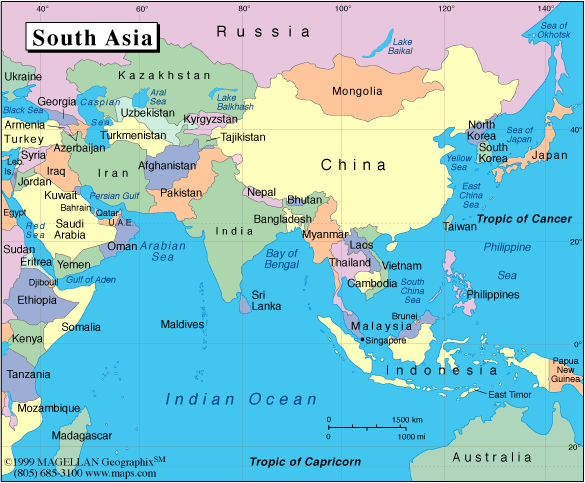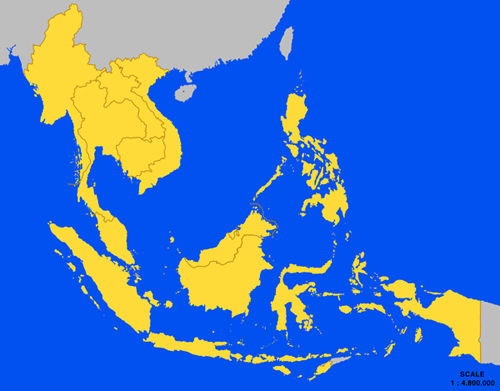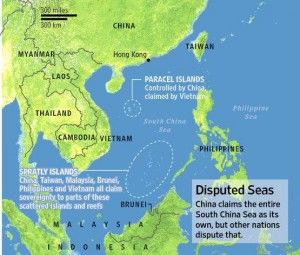As apocalyptic as the US' end game scenario may be for regional multipolarity, it's not at all assured to succeed, as there are quite a few contingencies that could develop between all of its assorted partners in preventing them from linking up in the Philippines and actualizing the Asian NATO. The article is thus divided into two parts; the first one describes the forecasted composition of the Asian NATO and explains the bilateral relationships that make it possible, while the second one investigates the multitude of factors that could impede its formation and/or lead to its eventual unravelling.
The Asian NATO
Prior to commencing the study, one must first understand exactly what is meant by the "Asian NATO". The author explored the genesis of this concept in his earlier work on how The US Is Juggling Chaos And Coordination To Contain China, and it boils down to formalizing the CCC in order to simultaneously split ASEAN between anti-Chinese states (like the Philippines) and those that behave pragmatically towards it (like Cambodia), and create a formalized mechanism for the US to coordinate further anti-Chinese moves in the region. The Philippines are the logical staging ground for this endeavor owing to its de-facto mutual defense guarantee with the US and the overlapping strategic partnerships that it has with Japan and soon Vietnam (which are its first and second respectively, not counting the 'special relationship' with its former American colonizer).
Baits and Lures
The overall idea is for the island chain to act as a geographic facilitator in linking together both of its strategic partners under American guidance in order to enhance their combined ability to coordinate anti-Chinese actions in the East and South China island disputes. Additionally, because of the Philippines own spat with China, it could also be used as a 'sacrificial lamb' in provoking a small-scale military engagement with China (one in which the US would purposely refrain from participating in) in order to test the People's Liberation Army-Navy's responses and assist with the crafting of more effective anti-Chinese tactical maneuvers by the Asian NATO. Or, in a variation of this scenario, it could become the Asian application of the Reverse Brzezinski policy of luring China into a strategic military trap by using its small and provocative neighboring maritime state as bait. Unlike Ukraine, which has no formalized mutual defense relationship with the US, the Philippines could call upon the Enhanced Defense Cooperation Agreement in order to turn even the tiniest exchange of fire into a global hot spot of brinksmanship between the US and China, thus giving it a freakishly disproportionate weight in international affairs.
Comment: The Reverse Brzezinski
A global shift in US strategy is currently underway, with America transitioning from the 'world policeman' to the Lead From Behind mastermind. This fundamental shift essentially entails the US moving from a majority forward-operating military to a defensive stay-behind force. Part of this transformation is the reduction of the conventional military and its replacement with special forces and intelligence recruits. Private military companies (PMCs) are also occupying a higher role in the US' grand strategy. Of course, it is not to say that the US no longer has the capability or will to forward advance - not at all - but that the evolving US strategy prefers more indirect and nefarious approaches towards projecting power besides massive invasions and bombing runs. In this manner, it is following the advice of Sun Tzu who wrote that "supreme excellence consists in breaking the enemy's resistance without fighting."
The outcome is a mixture of Color Revolutions, unconventional warfare, and mercenary interventions that avoids the direct use of US combat troops while relying heavily on regional allies' proxy involvement. This results in the promotion of American policy via oblique methods and the retention of relative plausible deniability. Importantly, the absence of conventional forces is thought to reduce the risk of a direct confrontation between the US and Russia, China, and Iran, the primary targets of these proxy wars.
. . .
Brzezinski has gone back to his basics of luring America's adversaries into strategic entanglements from which they cannot retreat. ... the Soviet-Afghan War ... the US' primary goal is to lure Russia and Iran into the Eurasian snares of Ukraine and Syria/Iraq.
. . .
The "Iranian Reset" is just as fake as the US-Russian Reset - a deceptive trick to buy valuable time for setting up a strategic betrayal. ... the Asian version is still in development.
Concluding Thoughts
It's no secret that the US wants to interrupt China's peaceful rise, and in doing so it's stoked the fire of regional rivalry in the South China Sea. The purpose behind this is twofold: (1) insert seemingly irreconcilable political differences into the economic relationship between China and its ASEAN partners (like what the US has tried to do between Russia and the EU with Ukraine and Crimea); and (2) provoke China into militarily responding to provocations from Vietnam and/or the Philippines to confirm the self-fulfilling cycle of regional suspicion that Washington has tried to foster (just as it's tried to do with Russia in Ukraine). The fulfillment of this double-headed objective is meant to 'justify' the push to craft an institutionalized entity that will essentially serve as an Asian NATO for countering China. It's envisioned that this organization's core deployment will be centered on the Philippine islands due to geostrategic and political factors (per the latter, that the government is entirely under the influence of the US at the moment), and that it's other two primary members will be Japan and Vietnam, both of which have the most heated island disputes with China. But, this entity is also expected to potentially include two other auxiliary members that can buffet its strategic potential, and these are India (in the direction of mainland Southeast Asia) and Australia (against Indonesia, the simultaneous containment of which alongside China was explained in the first section).
Everything doesn't have to be that way, however, since there are a multitude of possible scenarios that could occur in order to interrupt this process and possibly even lead to the dissolution of the Asian NATO before it ever has a chance to be formalized. In a nutshell, these are the explosion of regional conflicts that offset the focus of India (in Myanmar, Nepal, and the Seven Sisters) and the Philippines (in Mindanao), and the skilled application of Russian diplomacy in Vietnam and Japan. China can also play an active part by pushing its strategic interests deeper into the South Pacific and Indochina, which would serve to divert Australia and Vietnam's attention from their previous sole focus on the South China Sea in regards to 'containing China'. By shifting the initiative, China can make regional inroads while at the same time throwing its rivals off balance by unexpectedly flipping the dynamic against them in their home areas (the literal reverse of what they're attempting to do to China in the South China Sea). Also, democratic factors in Japan and the Philippines could weigh heavily in changing their respective governments' outlook towards this dangerous situation. Whichever form it ultimately takes, it's clear that there are definitely a plethora of situational options available, some of which can be directly influenced by China and its strategic Russian partner, to slow the process of Asian NATO formation, and that it can confidently be fought back against under the proper circumstances, with the cultivation of a dedicated enough level of political will, and through a little bit of 'geopolitical luck' (as unethical and coarse as that may sound in relation to Mindanao, Myanmar, Nepal, and the Seven Sisters).
Andrew Korybko is the American political commentaror currently working for the Sputnik agency.






Reader Comments